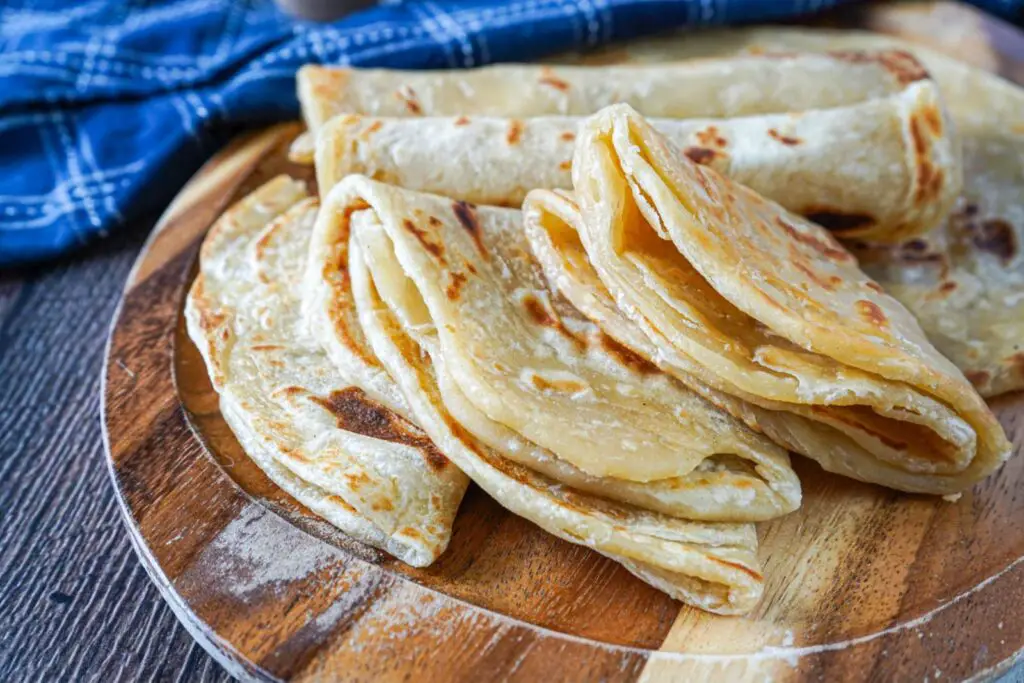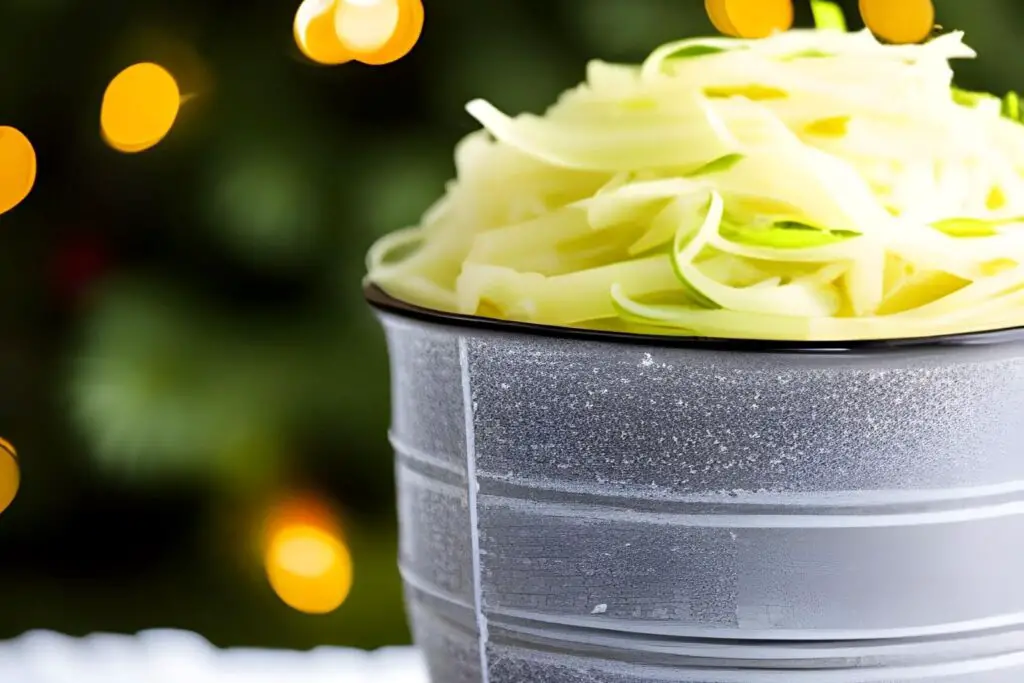
Frittatas are delicious and versatile Italian-style omelettes that can be enjoyed for breakfast, brunch, or even dinner. Packed with flavorful ingredients such as vegetables, cheese, and meats, frittatas are a fantastic way to use up leftovers and create a satisfying meal. What makes them even more appealing is their ability to be frozen, allowing you to prepare them in advance and have a convenient and tasty option ready whenever you need it. Freezing frittatas not only extends their shelf life but also provides a quick and easy meal solution for busy days. In this guide, we will explore the best methods for freezing frittatas while maintaining their texture and flavor.
Here is a step-by-step guide on how to freeze frittatas:
Step 1: Allow the frittata to cool down completely
After cooking a frittata, it is important to let it cool down completely before freezing it. This step is crucial for a couple of reasons.
Firstly, allowing the frittata to cool down at room temperature helps to prevent condensation. When a hot frittata is placed directly into the freezer, the difference in temperature between the hot food and the cold environment can lead to condensation forming on the surface of the frittata. This moisture can create ice crystals, which can negatively affect the texture and taste of the frittata when it is thawed and reheated. By allowing the frittata to cool down, you reduce the risk of excess moisture and ice crystals forming during the freezing process.
Secondly, cooling down the frittata evenly ensures that it freezes uniformly. If you place a hot frittata in the freezer, the outer layers may freeze quickly while the center remains warm. This uneven freezing can result in a frittata with an inconsistent texture and taste when it is later reheated. Allowing the frittata to cool down at room temperature ensures that the heat is evenly distributed throughout the dish, promoting a more consistent freezing process.
To cool down the frittata, remove it from the heat source and place it on a wire rack or a heat-resistant surface. This allows air to circulate around the frittata, facilitating the cooling process. It is generally recommended to cool the frittata for about 1 to 2 hours at room temperature before proceeding with the freezing process.
Step 2: Cut the frittata into portions or leave it as a whole
When freezing a frittata, you have the option to either freeze the entire frittata as a whole or cut it into individual portions before freezing. Choosing whether to cut it or keep it whole depends on your preferences and future usage.
Cutting the frittata into portions offers several advantages. Firstly, it allows for better portion control. By dividing the frittata into individual servings, you can freeze only the amount you need for each meal. This is particularly helpful if you are planning to enjoy the frittata as a quick breakfast or lunch option. It eliminates the need to defrost the entire frittata when you only want a single serving, saving you time and ensuring minimal food waste.
Additionally, cutting the frittata into portions facilitates a more efficient defrosting and reheating process. Smaller portions thaw more quickly and evenly than a larger frittata. This means you can easily take out the desired number of servings from the freezer and defrost them as needed. Whether you choose to defrost the frittata in the refrigerator overnight or use a microwave or oven, smaller portions will heat up faster and more evenly, allowing you to enjoy a hot and delicious frittata in no time.
However, if you prefer to freeze the entire frittata as a whole, there are still benefits to consider. Keeping it intact can be advantageous if you plan to use the entire frittata for a gathering or family meal. It simplifies the defrosting and reheating process since you won’t need to divide it into portions or keep track of multiple servings.
Ultimately, the decision of whether to cut the frittata or leave it whole depends on your specific needs and preferences. Consider factors such as portion control, convenience, and future usage when making your choice. Regardless of your decision, ensure that the portions or the whole frittata are wrapped and packaged properly for freezing to maintain their quality during storage.
Step 3: Wrap each portion or the whole frittata tightly
Once you have decided whether to freeze the frittata as individual portions or as a whole, the next step is to wrap it tightly in plastic wrap. This crucial step helps to protect the frittata from freezer burn and maintain its moisture during the freezing process.
Freezer burn occurs when the food is exposed to air inside the freezer. The dry, cold air can cause moisture in the frittata to evaporate, leading to dehydration and a loss of quality. By tightly wrapping each portion or the whole frittata, you create a barrier that minimizes air exposure, reducing the risk of freezer burn.
To wrap the frittata, begin by placing a sheet of plastic wrap on a clean and flat surface. If you are freezing individual portions, place each portion on a separate sheet of plastic wrap. If you are freezing the whole frittata, ensure that the plastic wrap is large enough to completely cover it.
Gently fold the plastic wrap over the frittata, making sure to cover it from all sides. Press the plastic wrap against the frittata to remove any air pockets and create a tight seal. Be thorough in wrapping, ensuring that no part of the frittata is exposed.
By wrapping the frittata tightly in plastic wrap, you create a protective layer that helps retain its moisture and prevents the entry of air, which can lead to freezer burn. This step is essential in maintaining the texture, taste, and overall quality of the frittata during its time in the freezer.
Step 4: Use aluminum foil for extra protection
After tightly wrapping the frittata in plastic wrap, it is recommended to provide an additional layer of protection by wrapping it again in aluminum foil. This extra step helps to maintain the quality of the frittata during the freezing process.
The aluminum foil acts as a barrier against air, moisture, and odors, providing added insulation for the frittata. By enclosing the plastic-wrapped frittata in aluminum foil, you create a more secure and robust package, reducing the chances of freezer burn and maintaining the frittata’s texture and flavor.
The aluminum foil helps to create a tighter seal, further preventing the entry of air and reducing the risk of moisture loss. It acts as an additional layer of insulation, shielding the frittata from temperature fluctuations inside the freezer. This insulation helps to maintain a consistent and optimal freezing environment, preserving the frittata’s quality.
Furthermore, the aluminum foil provides an extra layer of protection against odors and potential cross-contamination in the freezer. It helps to prevent the absorption of unwanted flavors from other foods and minimizes the risk of the frittata picking up any off-flavors or odors from its surroundings.
When wrapping the frittata in aluminum foil, ensure that it is completely covered and sealed. Wrap it snugly, paying attention to any exposed areas or gaps. This will help to maximize its protective properties and ensure the frittata remains well-preserved.
Remember to label the package with the contents and the date of freezing before placing it in the freezer. Proper labeling allows for easy identification and helps you keep track of the frittata’s storage time.
Step 5: Label and date the package
When freezing frittatas or any other food items, it is crucial to label and date the package. This simple step allows for easy identification, helps you keep track of the frittata’s freshness, and ensures that you prioritize using the oldest frittatas first.
Labeling the package with the contents of the frittata provides clarity and prevents confusion. It helps you quickly identify what is inside the package without having to unwrap or guess. You can use a marker or a label to write “Frittata” on the package, making it easy to locate in the freezer.
Dating the package is equally important. By indicating the date on which the frittata was frozen, you have a reference point for its storage duration. This is particularly useful because frittatas, like any frozen food, should ideally be consumed within a certain time frame to maintain their best quality. By having the date written on the package, you can easily determine how long the frittata has been in the freezer and make informed decisions about its usage.
Additionally, dating the package allows you to prioritize the use of the oldest frittatas first. As time goes by, it’s important to consume the frozen frittatas in the order they were frozen. Using the oldest frittatas first ensures that they are enjoyed when they are still at their best quality. This practice prevents them from being stored for too long, where they might lose flavor or texture.
To label and date the package, you can use adhesive labels, freezer-safe tape, or write directly on the wrapping material with a marker. Make sure the label is clear and easily readable, and place it in a visible area of the package.
Step 6: Place the wrapped frittatas in the freezer
Once you have properly wrapped the frittatas, the next step is to place them in the freezer. It is important to ensure they are positioned in a flat manner, as this allows for even freezing and makes it easier to stack them neatly in the freezer.
Placing the wrapped frittatas in a flat position is beneficial for several reasons. Firstly, it promotes even freezing. When the frittatas are laid flat, the cold air in the freezer can circulate around them more effectively. This helps to freeze the frittatas uniformly, preserving their texture and taste throughout.
Moreover, laying the frittatas flat prevents them from sticking together. If the frittatas were placed in the freezer in an upright position or at an angle, there is a higher chance that they may come into contact with each other. This can result in them freezing together, making it difficult to separate them without causing damage. By keeping them flat, you avoid this issue and ensure that each frittata remains intact and individually accessible.
In addition, storing the wrapped frittatas in a flat position makes it easier to stack them neatly in the freezer. This saves space and allows you to maximize the use of your freezer’s capacity. Neatly stacked frittatas are also more organized, making it simpler to locate and retrieve the specific frittata you desire without disturbing others.
When placing the wrapped frittatas in the freezer, ensure they are in a stable position and won’t shift or topple easily. If needed, you can use containers or freezer-safe bags to hold the frittatas in place and maintain their flat position.
Remember to leave some space between the frittatas and other items in the freezer to allow for proper airflow. This helps to maintain a consistent freezing temperature and prevents the frittatas from being crushed or damaged.
Other related questions
How do I thaw frittatas?
Thawing frittatas is best done in the refrigerator to ensure safe and even thawing. Simply transfer the frozen frittatas from the freezer to the refrigerator and allow them to thaw overnight or for approximately 24 hours. Avoid thawing at room temperature as it can promote bacterial growth. Once fully thawed, you can reheat the frittatas in the oven, microwave, or stovetop, depending on your preference. Ensure they are heated until piping hot before serving.
How long can I keep frozen frittatas in the freezer?
Frozen frittatas can be stored in the freezer for up to 2 to 3 months without a significant loss in quality. While they may remain safe to eat beyond this timeframe, the texture and flavor may start to deteriorate. To maintain the best quality, it is recommended to consume the frozen frittatas within the suggested time frame. Proper packaging, labeling, and storage conditions can help prolong their freshness and ensure a better taste upon thawing and reheating.
Can I refreeze frittatas that have been previously thawed?
It is generally not recommended to refreeze frittatas that have been previously thawed. When you thaw a frittata, the moisture in it can be released, potentially affecting its texture and taste. Additionally, the thawing process may introduce bacteria, which can multiply if the frittata is refrozen. To maintain the best quality and safety, it is advisable to consume the frittatas after they have been thawed and reheated, rather than refreezing them. If you have leftovers after thawing, it’s best to store them in the refrigerator and consume them within a few days.
How do I know if my frozen frittatas have gone bad?
To determine if your frozen frittatas have gone bad, you should rely on visual and sensory cues. If there are any signs of mold, unusual discoloration, or an off-putting odor, it is an indication that the frittatas have spoiled. Additionally, if the texture appears mushy, slimy, or has noticeable ice crystals, it could be a sign of deterioration. Trust your senses and if anything seems off, it’s best to err on the side of caution and discard the frittatas to avoid the risk of foodborne illness.
Can I use frozen frittatas with fresh ones?
It is generally not recommended to mix frozen frittatas with fresh ones in the same dish. The reason is that frozen frittatas have already undergone the freezing and thawing process, which can affect their texture and moisture content. Combining them with fresh frittatas can result in an inconsistent texture and taste. It is best to use frozen frittatas separately, ensuring they are fully thawed and reheated before consumption while enjoying fresh frittatas separately for the best overall quality and experience.
Can I freeze frittatas made with vegetables?
Yes, you can freeze frittatas made with vegetables. However, it’s important to note that the texture of the vegetables may change slightly upon freezing and thawing. Some vegetables, especially those with high water content, may become softer or release moisture during the freezing process. Despite these potential texture changes, freezing frittatas with vegetables is a convenient way to preserve them for later use.
Can I freeze frittatas that contain meat or seafood?
Yes, you can freeze frittatas that contain meat or seafood. Freezing helps to preserve the flavors and quality of the ingredients. However, it is important to ensure that the meat or seafood is cooked thoroughly before adding them to the frittata, as partially cooked ingredients may pose a food safety risk when frozen and reheated. Properly cooked meat and seafood in the frittata can be safely frozen and enjoyed later.
Can I freeze frittatas made with egg substitutes?
Yes, you can freeze frittatas made with egg substitutes. Egg substitutes, such as egg replacers or alternative products, can be used in frittatas just like regular eggs. They can be cooked and frozen in the same manner as traditional frittatas. However, it’s important to follow the specific instructions and guidelines provided by the manufacturer of the egg substitute for the best results.
Can I freeze frittatas in glass containers or do I need to transfer them to freezer-safe containers only?
While glass containers can be used to freeze frittatas, it is generally recommended to transfer them to freezer-safe containers for optimal results. Freezer-safe containers are specifically designed to withstand the low temperatures of the freezer and minimize the risk of breakage. Glass containers may be more prone to cracking or shattering when exposed to extreme temperature changes, so using freezer-safe containers provides added protection for your frittatas during freezing and storage.








